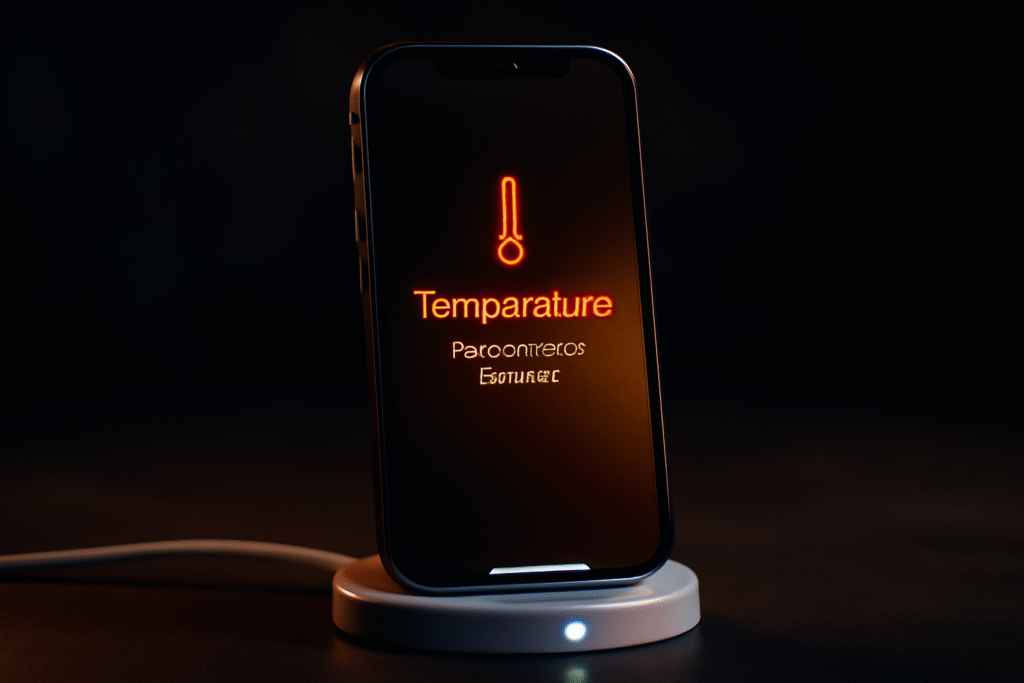The MagSafe charger uses Qi wireless charging technology with Apple’s magnetic alignment system to ensure your device connects perfectly every time. It delivers up to 15W of power to supported iPhones, which is faster than many third-party wireless chargers. However, wireless charging naturally produces more heat than wired charging because of energy loss during the transfer process.
Is It Normal for a MagSafe Charger to Get Warm?
Yes, some warmth is expected when charging, especially during the first few minutes or when charging from a low battery. The iPhone’s internal charging circuitry and the charger itself both generate heat. Apple even notes in its documentation that the MagSafe charger may become slightly warm to the touch during normal use.
When Heating Becomes a Problem
If your MagSafe charger is getting hot to the point that it’s uncomfortable to touch or if your iPhone displays a temperature warning, it’s time to investigate. Overheating can:
-
Reduce charging efficiency
-
Shorten battery lifespan
-
Pose a safety risk in extreme cases
Common Reasons Your MagSafe Charger Gets Hot
Using the Charger in a Hot Environment
Ambient temperature plays a major role in heat buildup. Charging in direct sunlight or in a hot room can push both the charger and the phone beyond safe operating temperatures.
Charging While Using the Phone
If you’re streaming videos, gaming, or running intensive apps while charging, your phone will naturally generate more heat, which transfers to the MagSafe charger.
Dust or Debris on the Charging Surface
Small particles between your phone and the MagSafe charger can cause misalignment, increasing resistance and heat.
Incompatible Power Adapter
Apple recommends using a 20W or higher USB-C power adapter. Lower-quality adapters may strain the charger, causing it to heat up.
Faulty Charging Cable or Adapter
Damaged cables or adapters can cause electrical inefficiencies, which manifest as heat.
Charging with a Thick or Non-MagSafe Case
Cases that are not MagSafe-compatible can create a gap, forcing the charger to work harder to maintain a connection, generating more heat.
How to Reduce MagSafe Charger Heating
Charge in a Cool, Well-Ventilated Space
Avoid charging in direct sunlight or hot environments. A cooler room helps dissipate heat faster.
Use an Apple-Recommended Power Adapter
Pair your MagSafe charger with Apple’s 20W USB-C power adapter or a trusted brand that meets USB-PD standards.
Keep Charging Surfaces Clean
Wipe the charger and the back of your phone regularly to ensure optimal contact.
Avoid Using the Phone During Charging
Heavy usage while charging increases heat output. Give your device time to cool by letting it charge uninterrupted.
Remove Thick or Non-Compatible Cases
Switch to a MagSafe-compatible case or remove the case entirely when charging.
Let the Charger Rest Between Sessions
If the charger feels hot, unplug it for a few minutes before resuming charging.
Is a Hot MagSafe Charger Dangerous?
In most cases, mild warmth is harmless. But if the charger is excessively hot or shows signs of damage (burn marks, discoloration, melting plastic), stop using it immediately and contact Apple Support. Overheating may indicate a defective unit or unsafe power delivery, which could potentially cause battery damage or even fire hazards.
Battery Health and Heat
Excessive heat accelerates battery wear. Apple’s batteries are designed to retain up to 80% of their original capacity after 500 full charge cycles, but consistent overheating can reduce this lifespan. Keeping your charger and phone cool is key to long-term battery health.
MagSafe and Optimized Battery Charging
Apple’s Optimized Battery Charging feature learns your usage patterns and slows charging past 80% until you need the phone. This not only preserves battery health but also reduces heat buildup.
Myths About MagSafe Heat
Myth 1: Heat means the charger is broken
Reality: Mild heat is normal, but overheating could be an issue.
Myth 2: You should always remove your case
Reality: Only remove non-MagSafe or extra-thick cases.
Myth 3: Wireless charging always overheats batteries
Reality: Quality chargers like MagSafe are designed with safety mechanisms to manage temperature.
Signs You Should Replace Your MagSafe Charger
-
Persistent overheating even in cool environments
-
Visible damage to the charging surface or cable
-
Slow charging despite proper adapter use
-
The charger disconnects frequently during use
How to Contact Apple for MagSafe Support
If your MagSafe charger appears defective, visit Apple’s official support page or take it to an Apple Store. Provide your purchase details and describe the overheating issue for warranty evaluation.
Also read: Scoopupdates: Your Go-To Hub for Fresh News, Trends, and Insights
FAQs
Why does my MagSafe charger get so hot at night?
Charging overnight in a warm room with the phone under blankets can trap heat.
Is it bad to use MagSafe in bed?
It’s safe, but avoid covering the charger and phone to allow heat to dissipate.
Will a fan help keep my charger cool?
Yes, a small fan can improve airflow and reduce heat.
Can I still use my phone while it’s on MagSafe?
Yes, but expect more heat if running demanding apps.
Does fast charging make MagSafe hotter?
Yes, higher wattage speeds up charging but generates more heat.
Conclusion
If your MagSafe charger is getting hot, the cause could be environmental factors, phone usage, or equipment issues. While mild warmth is normal, excessive heat should be addressed promptly to protect both your charger and your iPhone’s battery health. By following the tips above—using the right adapter, keeping surfaces clean, and avoiding high-heat environments—you can enjoy safe and efficient wireless charging for years to come.



